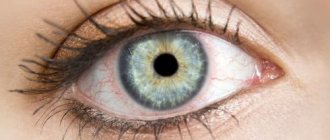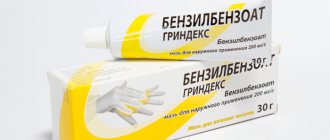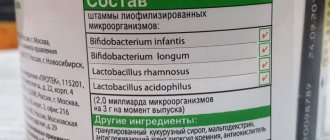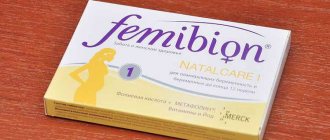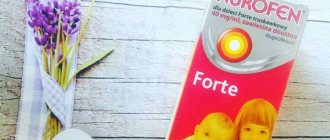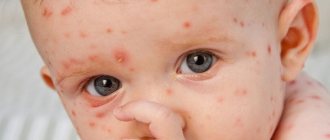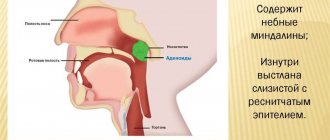Release form and composition
Dosage form – eye drops, ear drops, nasal drops 0.01%: clear, colorless liquid (1 and 1.5 ml each in polymer tube-droppers for single use, 5 or 10 tubes in a cardboard pack; 5 and 10 ml each in polymer bottles sealed with a dropper stopper and a screw cap with first opening control, in a cardboard pack of 1 or 5 bottles; 10 ml each in polymer bottles, sealed with a dropper cap, in a cardboard pack of 1 or 5 bottles; 20 ml each in glass bottles, sealed dropper cap or rubber stopper and aluminum cap, 1 or 5 bottles in a cardboard pack. Each pack also contains instructions for using Okomistin).
Composition of 1 ml drops:
- active substance: benzyldimethyl [3-(myristoylamino)propyl]ammonium chloride monohydrate – 0.1 mg in terms of anhydrous substance;
- additional components: sodium chloride, purified water.
Okomistin eye drops
The drug is a local antiseptic used in ophthalmology. It has an effect on bacterial pathogens, has an anti-inflammatory effect, and reduces the risk of complications after operations. The drug can be used for diseases of the auditory and respiratory tract, and for the herpes virus. It speeds up healing and shortens treatment time.
Composition and release form
Eye drops are a sterile transparent liquid containing the following components (per 1 milliliter of 0.01% solution):
| Active substance: benzyldimethyl ammonium chloride monohydrate (calculated as anhydrous) | 0.1 mg |
| Excipients: sodium chloride purified water | 9 mg up to 1 ml |
The drug is available in bottles with screw caps with first opening control or rubber stoppers, with a volume of 5, 10, 20 ml. They are made of polymer material or glass and equipped with a dropper. Eye drops can be packaged in disposable polyethylene dropper tubes of 1 and 1.5 ml. The drug is sold in a cardboard box containing 5, 10 tubes, 1, 5 bottles, along with instructions.
Pharmacodynamics and pharmacokinetics
The active ingredient miramistin causes the antimicrobial effect of the drops. The drug is effective against anaerobic, aerobic, gram-positive and gram-negative bacteria present in the form of individual cultures and microbial associations. It has a depressing effect on hospital strains that are multiresistant to antibiotics.
Miramistin is effective against streptococci, staphylococci and other gram-positive microflora. It is used in the presence of pathogenic fungi, adenoviruses, herpes viruses and human immunodeficiency. The drug has a detrimental effect on:
- chlamydia;
- gonococci;
- Treponema pallidum;
- Trichomonas;
- other pathogens of sexually transmitted diseases.
The inhibitory effect on microorganisms is based on the ability of miramistin to interact with cell surface molecules. This causes the destruction of membrane lipids. The cell becomes permeable to substances with a large mass. The activity of enzyme systems is inhibited, which causes suppression of the viability of microorganisms and their destruction.
Miramistin has a highly selective action and does not affect human cells. The drug reduces the resistance of bacteria, fungi and viruses to antibiotics. Benzyldimethyl has an anti-inflammatory effect. It stimulates regeneration processes, local protective reactions, activates the immune response, and accelerates recovery. The active substance is practically not absorbed into the systemic circulation.
Is Okomistin an antibiotic or not?
The drug has an antimicrobial effect against a wide range of microorganisms, but is not an antibiotic. It has virtually no side effects and is not absorbed into tissues. This facilitates the use of the drug in pediatric practice. Drops can be used simultaneously with antibiotics, enhancing their effect and reducing treatment time.
Indications for use
Eye drops are recommended for use in the following conditions:
- infectious processes of the anterior part of the eye (conjunctivitis, blepharoconjunctivitis, keratitis, keratouveitis);
- bacterial conjunctivitis and prevention of ophthalmia in children over 3 years of age;
- eye injuries, thermal, chemical burns;
- measures to prevent purulent-inflammatory complications before and after surgery;
- acute and chronic sinusitis, rhinosinusitis, rhinitis;
- external acute and chronic otitis media;
- chronic purulent mesotympanitis;
- otomycosis, herpes virus.
Pharmacological properties
Pharmacodynamics
The main active ingredient of Okomistin drops is the antiseptic benzyldimethyl-myristoylamino-propylammonium, which has pronounced antimicrobial activity against gram-positive and gram-negative, aerobic and anaerobic microorganisms in the form of microbial associations and monocultures, including hospital strains that exhibit polyresistance to antibiotics. The antiseptic is more effective against gram-positive cocci, including staphylococci and streptococci, and also affects pathogenic fungi, chlamydia, herpes viruses and adenoviruses.
The antimycotic effect extends to microbial associations and monocultures of ascomycetes of the genera Aspergillus and Penicillium, yeast fungi (Rhodotorula rubra and Torulopsis glabrata), yeast-like fungi (Trichophyton mentagrophytes, Trichophyton rubrum, Trichophyton verrucosum, T. violaceum, T. violaceum, T. schoenleinii, Epidermophyton Kaufman -Wolf, E. floccosum, Microsporum canis, Microsporum gypseum), other pathogenic fungi, such as Malassezia furfur (Pityrosporum orbiculare), including fungal microflora that exhibit resistance to chemotherapeutic agents.
The effect of benzyldimethylmyristoylaminopropylammonium is due to the direct hydrophobic interaction of its molecule with the lipids of microbial membranes, leading to their fragmentation and subsequent destruction. Along with this, part of the benzyldimethyl-myristoylamino-propylammonium molecule is immersed in the hydrophobic portion of the membrane, destroying the supra-membrane layer, loosening the membrane, increasing its permeability for large molecular substances, changing the enzymatic activity of the microorganism cell, inhibiting enzyme systems, which ultimately leads to inhibition of the vital activity of the microbe and its cytolysis. At the same time, the drug is characterized by high selectivity of action, since it practically does not affect the membranes of human cells, due to the different structure of the latter, the significantly longer length of lipid radicals of which sharply limits the possibility of hydrophobic interaction of antiseptic molecules with human cells.
Benzyldimethylmyristoylaminopropylammonium reduces the resistance of bacteria and dermatophytes to antibiotics. It has an anti-inflammatory and immunoadjuvant effect, enhances local protective mechanisms and tissue regeneration in the area of application, activates nonspecific protection due to modulation of the cellular and local humoral immune response.
Pharmacokinetics
If Okomistin is used locally, there is no data on the possible penetration of benzyldimethylmyristoylaminopropylammonium into the systemic circulation.
Okomistin® (Okomistin®)
The main active ingredient of the drug Okomistin® is the antiseptic benzyldimethyl-myristoylamino-propylammonium, which has a pronounced antimicrobial effect against gram-positive and gram-negative, aerobic and anaerobic bacteria in the form of monocultures and microbial associations, including hospital strains with multidrug resistance to antibiotics. The drug acts on chlamydia, pathogenic fungi, as well as herpes viruses and adenoviruses. The drug is more effective against gram-positive bacteria, including: staphylococci, streptococci.
It has an antifungal effect on ascomycetes of the genus Aspergillus and the genus Penicillium, yeasts (Rhodotorula tubra, Torulopsis glabrata) and yeasts (Trichophyton rubrum, Trichophyton mentagrophytes, Trichophyton verrucosum, T. schoenleini, T. violaceum, Epidermophyton Kaufman-Wolf, E, floccosum, Microsporum gypseum , Microsporum canis), as well as other pathogenic fungi (for example, Pityrosporum orbiculare (Malassezia furfur)) in the form of monocultures and microbial associations, including fungal microflora with resistance to chemotherapeutic drugs.
The action of benzyldimethyl-myristoylamino-propylammonium is based on the direct hydrophobic interaction of the molecule with the lipids of the membranes of microorganisms, leading to their fragmentation and destruction. In this case, part of the benzyldimethylmyristoylaminopropylammonium molecule, plunging into the hydrophobic portion of the membrane, destroys the supra-membrane layer, loosens the membrane, increases its permeability for large molecular substances, changes the enzymatic activity of the microbial cell, inhibits enzyme systems, which leads to inhibition of the vital activity of microorganisms and their cytolysis. Benzyldimethyl-myristoylamino-propylammonium has a high selectivity of action against microorganisms, because has virtually no effect on the membranes of human cells, which is due to the different structure of the latter - the significantly longer length of lipid radicals, which sharply limits the possibility of hydrophobic interaction of benzyldimethyl-myristoylamino-propylammonium with cells.
Under the influence of the drug, the resistance of bacteria and fungi to antibiotics is reduced. Benzyldimethyl-myristoylamino-propylammonium has anti-inflammatory and immunoadjuvant effects, enhances local protective reactions, regenerative processes, activates nonspecific defense mechanisms due to modulation of the cellular and local humoral immune response.
Indications for use
Okomistin eye, ear, and nasal drops are used for infections of various etiologies in the following areas of medicine:
- ophthalmology: complex treatment of infectious lesions of the anterior part of the eye - blepharitis, conjunctivitis, keratitis, keratouveitis; eye injuries; eye burns – thermal and chemical; therapy and prevention of purulent-inflammatory eye lesions in the preoperative and postoperative periods; prevention of ophthalmia in newborns, including chlamydial and gonococcal;
- otorhinolaryngology: complex treatment of acute sinusitis/rhinosinusitis, acute rhinitis, exacerbation of chronic sinusitis/rhinosinusitis, acute and chronic external otitis, otomycosis, chronic purulent mesotympanitis.
Okomistin
The main active ingredient of the drug; is an antiseptic benzyldimethyl-myristoylamino-propylammonium, which has a pronounced antimicrobial effect against gram-positive and gram-negative, aerobic and anaerobic bacteria in the form of monocultures and microbial associations, including hospital strains with multidrug resistance to antibiotics. The drug acts on chlamydia, pathogenic fungi, as well as herpes viruses and adenoviruses. The drug is more effective against gram-positive bacteria, including: staphylococci, streptococci.
It has an antifungal effect on ascomycetes of the genus Aspergillus and the genus Penicillium, yeasts (Rhodotorula tubra, Torulopsis glabrata) and yeasts (Trichophyton rubrum, Trichophyton mentagrophytes, Trichophyton verrucosum, T. schoenleini, T. violaceum, Epidermophyton Kaufman-Wolf, E, floccosum, Microsporum gypseum , Microsporum canis), as well as other pathogenic fungi (for example, Pityrosporum orbiculare (Malassezia furfur)) in the form of monocultures and microbial associations, including fungal microflora with resistance to chemotherapeutic drugs.
The action of benzyldimethyl-myristoylamino-propylammonium is based on the direct hydrophobic interaction of the molecule with the lipids of the membranes of microorganisms, leading to their fragmentation and destruction. In this case, part of the benzyldimethyl-myristoylamino-propylammonium molecule, plunging into the hydrophobic portion of the membrane, destroys the supra-membrane layer, loosens the membrane, increases its permeability for large-molecular substances, changes the enzymatic activity of the microbial cell, inhibits enzyme systems, which leads to inhibition of the vital activity of microorganisms and their cytolysis. Benzyldimethyl-myristoylamino-propylammonium has a high selectivity of action against microorganisms, because has virtually no effect on the membranes of human cells, which is due to the different structure of the latter - the significantly longer length of lipid radicals, which sharply limits the possibility of hydrophobic interaction of ensyldimethyl-myristoylamino-propylammonium with cells. Under the influence of the drug, the resistance of bacteria and fungi to antibiotics is reduced. Benzyldimethyl-myristoylamino-propylammonium has anti-inflammatory and immunoadjuvant effects, enhances local protective reactions, regenerative processes, activates nonspecific defense mechanisms due to modulation of the cellular and local humoral immune response.
Okomistin, instructions for use: method and dosage
Ophthalmology
Okomistin eye drops, ear drops, nasal drops for the treatment of eye diseases are used topically, by instillation into the conjunctival sac of the affected eye.
Recommended dosage:
- treatment of eye infections: 1–2 drops 4 to 6 times/day, until clinical recovery;
- perioperative prophylaxis: 1–2 drops 3 times/day 2–3 days before surgery, then for 10–15 days after surgery;
- treatment of eye burns: after abundant rinsing of the eyes with water for 1–2 hours, frequent instillations are carried out (every 5–10 minutes); then instill 1–2 drops 4 to 6 times a day until clinical recovery;
- bacterial conjunctivitis in children over 3 years of age: 1 drop up to 6 times a day; course duration 7–10 days;
- prevention of ophthalmia in newborns: 1 drop is instilled into each eye of the child immediately after birth 3 times with an interval of 2–3 minutes.
Otorhinolaryngology
Okomistin eye drops, ear drops, nasal drops for the treatment of diseases of the ENT organs are used topically, by instillation into the nasal cavity or ear canal, ultrasonic irrigation, injection of a solution into the tympanic cavity, and insertion of a gauze turunda soaked in an antiseptic into the external auditory canal.
Recommended dosage:
- acute sinusitis/rhinosinusitis, exacerbation of chronic sinusitis/rhinosinusitis, acute rhinitis, infections of the nasal mucosa: instill 2–3 drops of the drug into each nasal passage 4–6 times/day; children under 12 years old – 1–2 drops 4–6 times/day. Duration of therapy is up to 2 weeks;
- acute and chronic external otitis, otomycosis: instill 5 drops 4 times a day into the external auditory canal; children under 12 years old - 2-3 drops 4-6 times a day (instead of instillation, you can insert a gauze turunda impregnated with an antiseptic into the external auditory canal 4 times a day). The duration of the course of therapy is 10 days;
- chronic mesotympanitis: as part of complex therapy, Okomistin together with antibiotics is sprayed using hardware ultrasonic irrigation or injected into the tympanic cavity.
If on the 3rd–4th day of using Okomistin there is no positive dynamics of treatment (the severity of symptoms increases or new signs/symptoms of the disease appear, complications develop), you need to consult a doctor.
Instructions for use Okomistin
During treatment, the drug is used 1-2 drops inside the conjunctival sac 4-6 times a day until recovery. For prophylaxis, the medicine is prescribed 2-3 days before surgery and for 10-15 days after it. In this case, the drug is used 1-2 drops 3 times a day. When treating burns, the eyes are washed with water, then the medicine is instilled every 5-10 minutes for 1-2 hours, then it is used according to the standard regimen.
For acute and chronic sinusitis, rhinosinusitis, rhinitis, Okomistin is instilled into the nose 4-6 times a day for 14 days. For the treatment of external otitis and otomycosis, the medicine is prescribed 5 drops into the external auditory canal 4 times a day. You can insert a gauze swab moistened with the drug inside. The course of treatment is 10 days. For chronic mesotympanitis, the drug is used with hardware ultrasonic irrigation along with antibiotics.
Miramistin is used for bacterial conjunctivitis in children over 3 years of age. It is prescribed 1 drop up to 6 times a day for 7-10 days. To prevent ophthalmia, use 1 drop of the drug 3 times with breaks of 2-3 minutes. Before instillation, you must wash your hands. If there is no positive dynamics or complications occur on the 3-4th day of treatment, you should consult a doctor.
special instructions
Information for patients who wear contact lenses: lenses should be removed before instillation; they can be put on at least 15 minutes after instillation.
To avoid contamination and cross-infection, do not use the same vial to treat an eye, nose, or ear infection.
To prevent contamination of the tip of the dropper and the drug solution during instillation, avoid touching the eyes and skin or other surfaces.
The dropper bottle is intended strictly for individual use to prevent the spread of infection.
Impact on the ability to drive vehicles and complex mechanisms
If there is a temporary loss of clarity of visual perception after instillation of Okomistin drops, you should refrain from driving a car or working with complex machinery, machines and production equipment until vision is completely restored.
Reviews about Okomistin
Okomistin, according to patient reviews, when included in the combination treatment of bacterial, viral or fungal infections, significantly accelerates the healing process and alleviates the course of diseases, because the antiseptic enhances the effect of antibiotics. A big advantage is the possibility of using the solution to treat children, as well as pregnant and breastfeeding women.
Particularly noteworthy is the versatility of Okomistin, which can be used both in the treatment of eye infections and diseases of the ear, nose, and, if necessary, for the prevention and treatment of influenza and acute viral infections.
A universal protector for your child.
as an advertisement
Often illnesses suffered in childhood have consequences that affect health for many years of life. These include diseases of the eyes, ear, nose and throat, which often affect children. Therefore, their timely diagnosis and treatment is very important for the child’s health. In the future, this will help to avoid a number of chronic diseases and serious complications, the initial source of which may be diseases of the eyes, ears, throat, and nose suffered in childhood.
Inflammatory eye diseases in children
Mothers often ask the question: What to do when a child’s eyes become sour? How dangerous is this?
In newborns, dacryocystitis is very common - this is an inflammation of the lacrimal sac, in which there is mucous or mucopurulent discharge from the eye, swelling in the inner corner of the eye. The reason for this is the use of ointment-based antibacterial drugs in the maternity hospital. Similar symptoms are observed with conjunctivitis, but in addition, redness of the vessels of the conjunctiva and skin of the eyelids is also noted. The cause of the disease can also be dirty hands with which children rub their eyes, especially if the child attends a kindergarten where there are sick children (contact conjunctivitis). The causative agent of the disease is usually a mixed viral-bacterial or viral-bacterial-fungal infection. The attachment of a fungus is especially dangerous, since the process can penetrate the orbit and spread to the brain and its membranes.
And here the question : “How can a mother quickly and correctly begin treatment in order to provide first aid and not harm her eyes?”
Answer : Do not use antibiotics, as they have no effect on viruses and fungi at all, so they not only do not improve the condition of the diseased eye, but can also aggravate the inflammatory process. Especially if they are used in combination with hormonal drugs.
The only drug effective against all possible microorganisms that cause infectious and inflammatory diseases of the eyes is Okomistin® , eye/ear/nasal drops, 0.01% miramistin .
Okomistin® is an innovative drug based on the modern highly effective antiseptic miramistin, which does not cause allergic reactions or irritation, since it is an isotonic solution similar in composition to tears, which makes the drops painless and comfortable to use.
Timely use of Okomistin® allows you to avoid the painful procedure of deep probing of the nasolacrimal duct (puncture), which is performed in a hospital setting.
Runny nose in children
The most common cause of a runny nose is acute respiratory viral infections (ARVI). They make up about 90% of all infectious pathologies, are severe, especially in children of the first three years of life, often cause complications and therefore remain one of the most pressing problems in pediatrics.
What to do when children in kindergarten or school start getting sick one after another, how to protect your child? What to do if the child gets a cold and the mother is pregnant? The effect of the virus on the fetus can cause miscarriage or developmental disabilities.
The cause of a runny nose in a general respiratory disease can be not only respiratory viruses. Most often, associations of pathogens arise - viral-bacterial, viral-mycoplasma, or several viruses. In addition to these microorganisms, the human body contains opportunistic microflora, which, as a rule, include pathogens of fungal diseases. They can be activated under conditions of the inflammatory process. When an association of viruses, pathogenic bacteria, fungi and other microorganisms occurs, they have a significant impact on each other and acquire aggressive properties, which is also facilitated by the inhibition of the body’s defenses.
How to properly treat ARVI? The high variability of viruses and the impossibility of creating a vaccine against several hundred ARVI pathogens does not provide complete protection against the disease, even with the help of vaccination. Here Okomistin® , which effectively acts both against viruses that cause colds, and against all other microorganisms that could cause the disease.
Okomistin® has a powerful antimicrobial, pronounced anti-inflammatory effect and stimulates local immunity.
Okomistin® is an absolutely safe drug; it can be successfully used for the prevention and treatment of children of any age, starting from the first days of life. Okomistin® is also approved for use during pregnancy and breastfeeding.
The use of Okomistin® at the first symptoms of the disease prevents the penetration of viruses and associations of microorganisms into the body, their adhesion to the stratified epithelium of the conjunctiva of the eyes and the ciliated epithelium of the nasopharynx. To do this, Okomistin® must be instilled into the eyes and nose, according to the instructions for medical use of the drug. In addition to the direct antiseptic effect, Okomistin® form a thin protective film on the surface of the mucous membrane, thereby maintaining a long-lasting and reliable antiseptic effect.
If you do not start timely treatment of a runny nose, microorganisms multiply, which leads to the destruction of epithelial cells. In this case, symptoms such as watery eyes, coughing, sneezing, and nasal congestion appear. Subsequently, microorganisms penetrate the blood and have a direct toxic effect, manifested in the form of fever, chills, muscle pain, and headache. At this stage, in addition to Okomistin®, it is necessary to additionally use drugs that alleviate the clinical symptoms of ARVI.
Antibiotics should not be used without consulting a doctor (especially in combination with hormones), since their unreasonable use can suppress the body's defense systems, stimulate the addition of a secondary infection and the development of complications.
If, despite the treatment taken, a runny nose and other symptoms of ARVI in a child do not go away, but only worsen, it is necessary to consult a pediatrician. Perhaps the child’s cold caused complications.
Treatment of ear diseases in children
About 75% of children under three years of age have problems with ear infections. This is due to the structural features of the Eustachian tube in a child. Ear diseases are especially relevant for children in the first year of life due to the anatomical and physiological structure of the nasopharynx. When you blow your nose, microorganisms enter the middle ear through the Eustachian tube and cause inflammation - otitis media. The child experiences severe ear pain, hearing loss, headache, dizziness, and fever. In children under one year old, the only symptom of otitis media may be severe restlessness and crying.
What is the correct tactic for treating ear diseases? In the initial stage and in mild cases, treatment can be carried out at home. In order to relieve pain, it is necessary to use non-steroidal anti-inflammatory drugs 2-3 times a day (ketaprofen, diclofenac, ibuprofen, etc.). But for successful treatment of inflammatory ear disease, this is not enough; it is necessary to remove the immediate cause of the inflammatory process - microorganisms that have penetrated the ear
Very often, the cause of acute otitis is the effect on the mucous membrane of the ear not only of bacterial, but also fungal and viral microflora. The generally accepted use of antibiotics at this stage is irrational, since none of them has such a wide spectrum of action that will be effective against all possible pathogens of otitis media. Antibiotics have absolutely no effect on viruses and fungi, so they not only do not improve the patient’s condition, but can also aggravate the course of the inflammatory process, especially in combination with hormonal drugs (Sofradex, Dexona, Polidexa, Garazon, etc.). Ototoxic antibiotics such as monomycin, kanamycin, neomycin, streptomycin, florimycin, ristomycin, gentamicin should not be prescribed.
Okomistin® will come to your child’s aid again . This is the only drug in Ukraine that has a detrimental effect on all possible microorganisms, including their antibiotic-resistant strains, which could cause otitis media.
An important advantage of Okomistin® is the ability to begin effective treatment immediately, at the first signs of the disease, without waiting for the results of culture tests for the sensitivity of microorganisms. As soon as an infectious disease begins, even before visiting a doctor, do not waste precious time! Use Okomistin® to destroy the infection at the very beginning of the disease!
Okomistin® is a first aid drug that should be in every first aid kit!
Okomistin® can without a prescription in pharmacies in Kiev and throughout Ukraine.
published 01/09/2011 10:11 updated 27/02/2015 — Eye diseases
